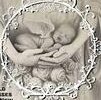
Infant clothes are clothes for infants. Infant fashion is a social and cultural consumerist practice that encodes numerous social features. It illustrates a system of differences in ethnicity, social class, and gender. While the term “baby fashion” is often viewed as a harmless expression of affection, the fact remains that there are many issues associated with infant clothing. Let’s take a closer look at the topic. How are we supposed to identify baby fashion and what are its effects?
When choosing winter clothing, look for extra warm outerwear. While a winter coat and warm pants will do for warmer climates, full-body outerwear is necessary for colder weather. You can purchase a stroller bunting to cover your baby’s feet and legs, if necessary. Babies usually don’t need shoes, but booties are great for extra warmth. In warmer weather, sun hats are essential, so choose one with a wide brim and a snug fit.
One-pieces are essential in the early months. They can be worn under a dress, over tights, or on their own. Most come with cute designs or ruffles, but there are also plain versions to maintain a clean silhouette. Baby clothes for newborns are a must-have for the first year of your child’s life. It’s essential to keep your baby’s comfort in mind and to make diaper changes as easy as possible.
As with any clothing, choose the material with the most comfort in mind. Choose clothes that won’t irritate your baby or irritate it. Choose clothes made of natural fabrics, like cotton, or OEKO-TEX-certified 100 percent organic cotton. For the coldest weather, opt for footie pants. Baby leg warmers are also very cute. Baby leg warmers are also an essential item of baby clothing, but can be difficult to find.
Basic baby wardrobes are important because infants grow out of clothing much faster than adults do, so be sure to purchase enough clothes for your baby. Don’t buy too many, but buy enough to keep your little one comfortable and safe. A basic wardrobe should contain at least six pairs of socks and three to five receiving blankets. Also, make sure to invest in two or three soft hats for your baby. There’s no harm in having a few extra onesies or sleep sacks on hand in case a messy diaper or excessive spitting up occurs.
Depending on the weather, you may want to buy an extra outfit to keep your newborn comfortable. For instance, a light cotton blanket can provide shade without overheating your child. Another useful item is a muslin blanket. You can drape it over your child’s carrier while allowing some air to circulate. Newborns may have a few occasions to dress up in cute outfits. A soft beanie hat or baby booties can keep your baby warm during cold weather. And don’t forget to buy some cotton mitts or socks to prevent your newborn from scratching himself.
Baby brands differ in sizing. Some run roomy while others fit snugly. Mixing and matching brands can give your baby a variety of fits to choose from. If you’re shopping for clothing for everyday use, stick with inexpensive options. Then, save more money for special occasions like birthdays and christenings. For those special events, choose a higher quality brand. Once your baby is a little older, consider buying expensive clothing that suits your budget.
